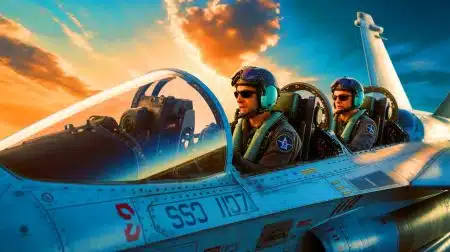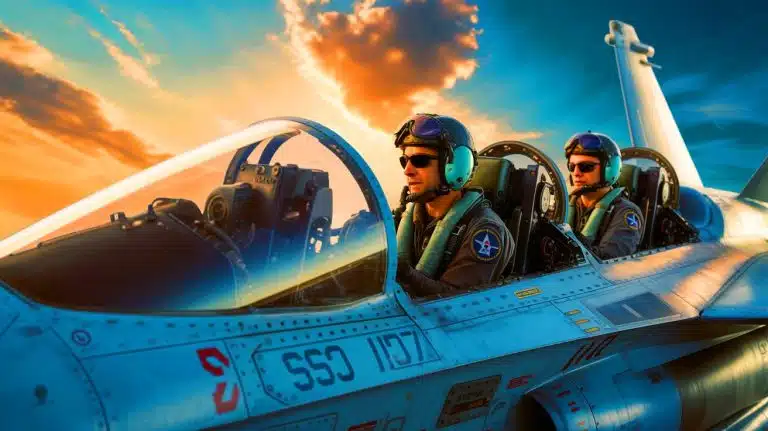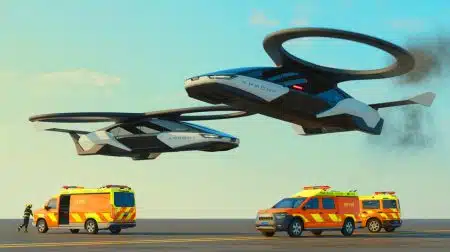| IN A NUTSHELL |
|
In the world of naval aviation, the Top Gun program has long been synonymous with elite training and high-stakes aerial combat. The legacy of the 1986 film “Top Gun” continues to inspire a new generation of fighter pilots. National Geographic’s documentary series, “Top Guns: The Next Generation,” offers an unprecedented glimpse into this rigorous training program. Viewers are taken behind the scenes to witness the intense preparation and dedication required to earn the coveted golden wings. This series not only highlights the technical skills and physical demands but also emphasizes the resilience and adaptability necessary for success.
The Rigors of Training
The journey to becoming a Top Gun pilot is not for the faint-hearted. The program is designed to push trainees to their physical and mental limits. Students from the Navy and Marines undergo exhaustive training that includes dive bombing at high speeds and landing on aircraft carriers, a task known as “catching the wire.” These exercises are crucial for developing the skills needed in real-world combat scenarios.
According to Capt. Juston “Poker” Kuch, who oversees training at NAS Meridian, the sheer volume of information and speed at which it is delivered is overwhelming by design. Trainees must learn to process critical data quickly, determining the most important information needed to keep their aircraft operational. This approach mirrors the high-pressure situations pilots will face in combat.
One of the most significant changes in training over the years is the increased use of simulators. These advanced devices allow students to practice and learn from mistakes in a controlled environment. Unlike real flights, simulators can be paused for immediate feedback, enabling trainees to refine their techniques before hitting the skies.
Mastering Dogfighting Techniques
Dogfighting, a core component of the Top Gun program, demands exceptional agility and quick decision-making. Trainees engage in simulated combat against experienced instructors to hone their offensive and defensive maneuvers. This phase of training tests not only their flying skills but also their ability to remain calm under pressure.
Capt. Kuch explains that managing G-forces is another critical aspect of training. Pilots must acclimate to the physical stresses of high G-forces, which can reach up to 7.5 Gs in advanced stages. G-suits and anti-G straining maneuvers help pilots maintain consciousness and control during intense maneuvers. Physical fitness, proper nutrition, and adequate rest are emphasized to ensure pilots are in peak condition.
The transition from simulation to reality can be daunting, as one student admitted to feeling apprehensive during their first real bombing dive. However, the combination of simulator training and real-world experience enables trainees to develop the necessary skills and confidence for success.
The Role of Resilience
While technical skills are essential, resilience is a defining trait of successful Top Gun candidates. The training program is structured to challenge students and allow them to experience failure in a safe environment. This approach prepares them for the unpredictability of combat, where quick recovery and adaptability are vital.
Capt. Kuch highlights the importance of perseverance, stating that every successful candidate shares a dedication to the mission and a willingness to learn from setbacks. This resilience is crucial not only for completing the program but also for thriving in the demanding world of naval aviation.
As technology continues to evolve, the program adapts to incorporate new tools and techniques. Enhanced simulators and mixed-reality devices offer more immersive training experiences, providing students with valuable opportunities to refine their skills and learn from real-time feedback.
Celebrating Success
The culmination of the Top Gun program is a moment of triumph for trainees. Upon successfully completing their training, students are awarded their golden wings, symbolizing their readiness to serve as elite naval aviators. This achievement is celebrated with camaraderie and a sense of pride, reflecting the hard work and dedication required to reach this milestone.
Capt. Kuch's commitment to fostering resilience and excellence in his trainees is evident in the success of the program. As the documentary series captures these moments, viewers gain a deeper understanding of the sacrifices and determination that define the Top Gun experience.
With the continued advancement of technology and training methods, the future of the program looks promising. The integration of automated debriefing systems and enhanced simulation capabilities offers new avenues for growth and development, ensuring that the next generation of pilots is prepared for the challenges ahead.
As "Top Guns: The Next Generation" premieres, it offers a rare glimpse into the world of elite naval aviation training. The series showcases the dedication and resilience required to succeed in this demanding field. As technology continues to shape the future of fighter pilot training, what innovations will define the next era of Top Gun pilots?
Did you like it? 4.4/5 (29)








Wow, 7.5 Gs! How do pilots even stay conscious through that? 😮
Wow, 7.5 Gs sounds intense! How do the pilots manage to stay conscious during such maneuvers? 🤔